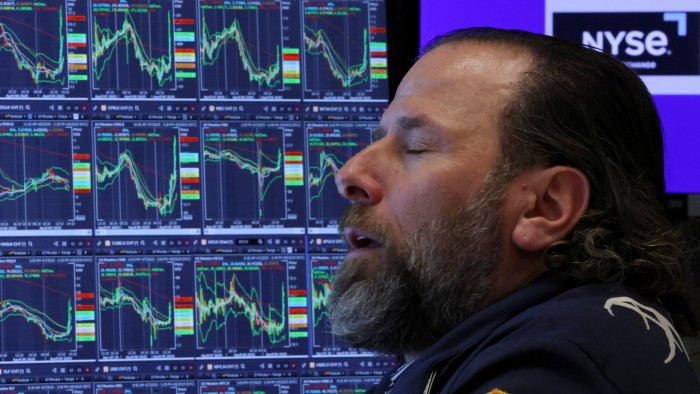Unlock the Editor’s Digest for free
Roula Khalaf, Editor of the FT, selects her favourite stories in this weekly newsletter.
Hahahahaha OK then!!!!
For the next 90 days, the US will impose 10-per-cent universal tariffs instead of the “reciprocal” tariffs announced by the White House last week. At least for countries that haven’t retaliated.
China is an especially glaring exception. President Trump announced the pause at the very end of a Truth Social post that was supposedly focused on an increase in tariffs against China to 125-per-cent. That post came less than four hours after President Trump posted that it was “a good time to buy”. ¯\_(ツ)_/¯
In the 90-day pause period, it seems that the US president wants to simply Do Deals with every country in the world. In the interim, the US is imposing an additional universal 10-per-cent tariff, as Treasury secretary Scott Bessent said in a press conference, adding that US officials have a meeting with Vietnam today.
One important issue here: Bessent didn’t answer a reporter’s shouted question about the EU, which voted to approve additional tariffs against the US this morning.
Anyway, the stonks are stonking. The S&P 500 was up almost 8 per cent around 2pm in New York:

And the Nasdaq Composite was ripping, up 9.5 per cent, despite the fact that the back-and-forth tariff fight with China is ongoing.
Most importantly, the shockingly quick Treasury-curve steepener trade we saw over the past few days is reversing itself.
To explain: Treasuries maturing in two years (and less) are more closely linked to near-to-medium-term Federal Reserve policy decisions. Yields have been falling since February, as traders price rising risk of recession and at least Fed “insurance” cuts. Earlier today, the bond market carnage was so severe they were even pricing in the possibility of emergency monetary easing.
On the other hand, the value of longer-dated Treasuries are more dependent on inflation (to simplify, a bond’s principal repayment is worth even less in 30 years if inflation is high).
So the fact that the two-year Treasury yield has soared the most — an eye-popping 30 basis points to the 10-year yield’s ~15 basis points — seems to imply that the near-term doomsday scenario is less of a risk, in markets’ view.

So Great Depression 2 is off, we guess? For now.
But hey! It looks like that Walter Bloomberg has been vindicated. Same goes for the bank trading desks that were circulating the headlines before he did on Monday.


